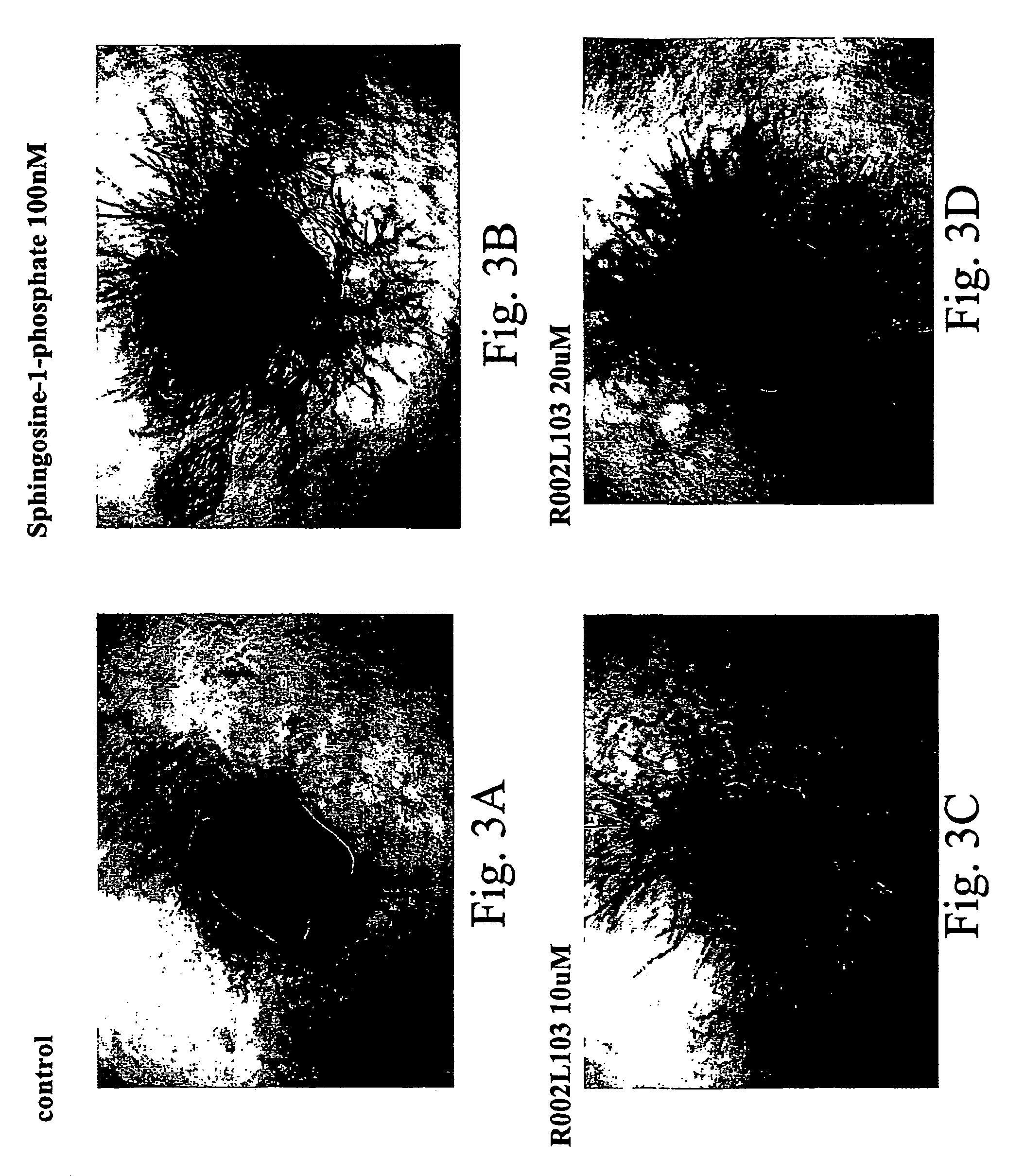Short peptides from the ‘2nd loop’ of 7 transmembrane receptor which selectively modulate signal transduction
a transmembrane receptor and signal transduction technology, applied in the direction of peptide/protein ingredients, peptide sources, instruments, etc., can solve the problems of excessive angiogenesis, risk of tissue death, extreme unsatisfactory, etc., and achieve the effect of improving the condition
- Summary
- Abstract
- Description
- Claims
- Application Information
AI Technical Summary
Benefits of technology
Problems solved by technology
Method used
Image
Examples
example 1
Preparation of Compounds of the Invention
[0194]The novel compounds of this invention can be synthesized utilizing a 430A Peptide Synthesizer from Applied Biosystems using F-Moc technology according to manufacturer's protocols. Other suitable methodologies for preparing sequences are known to person skilled in the art. See e.g., Aarifield, R. B., Science, 232: 341 (1986); Carpino, L. A., Han, G. Y., J. Org. Chem., 37: 3404 (1972); Gauspohl, H., et al., Synthesis, 5: 315 (1992)), the teachings of which are incorporated herein by reference.
[0195]Rink Amide Resin [4(2′,4′ Dimethoxyphenyl-FMOC amino methyl)phenoxy resin] was used for the synthesis of C-amidated peptides. The alpha-amino group of the amino acid was protected by an FMOC group, which was removed at the beginning of each cycle by a weak base, 20% piperidine in N-methylpyrrolidone (NMP). After deprotection, the resin was washed with NMP to remove the piperidine. In situ activation of the amino acid derivative was performed by...
example 2
Determination of Angiogenesis Modulating Properties
[0196]In accordance with the angiogenesis aspect it should be appreciated that some of the compounds that comprise sequences (a)-(i) above have better properties in modulating angiogenesis than others. Some of the conservative substitutions in the essential positions may diminish the angiogenesis modulating properties, while other such conservative substitution in the essential positions may improve these properties. The same is true also for deletions, substitutions (both conservative and non-conservative) in non-essential positions, as well as to chemical modifications of the side chains (in any position) or insertions. In addition the type and size of the non-amino acid portion of the compounds, such as a hydrophobic moiety in one of its terminals, may diminish or increase the angiogenesis modulating properties. The angiogenesis modulating properties may be determined by using one of the assays below.
2.1 Cellular Assay
[0197]An in...
example 3
Modulation of Angiogenesis in Aortic Ring Assay by the Compounds of the Invention
[0284]Aortic ring assay was performed as described above in “Experimental Procedures” with compounds comprising the peptide of the invention R002L103.
[0285]FIG. 3 shows pictures of aortic rings incubated with sphingosine 1 phosphate 100 nm, with 10 μm and 20 μm R002L103. As can be seen the compound of the invention was able to increase angiogenesis in a dose dependent manner, in a degree at least equal to that of S1P, EDG3's natural agonist.
[0286]FIG. 2 shows a graph indicating a capillary thickness and capillary length in the presence and absence of various concentrations of R002L103. As can be seen, capillary thickness was directly correlated to the concentration of the compound of the invention, while capillary length, was increased from control to 10 μm of the compound, and decreased in 20 μm, probably as compensation for the increased thickness of the capillary.
[0287]FIG. 4 shows that the stimulato...
PUM
| Property | Measurement | Unit |
|---|---|---|
| temperature | aaaaa | aaaaa |
| transparent | aaaaa | aaaaa |
| thickness | aaaaa | aaaaa |
Abstract
Description
Claims
Application Information
 Login to View More
Login to View More - R&D
- Intellectual Property
- Life Sciences
- Materials
- Tech Scout
- Unparalleled Data Quality
- Higher Quality Content
- 60% Fewer Hallucinations
Browse by: Latest US Patents, China's latest patents, Technical Efficacy Thesaurus, Application Domain, Technology Topic, Popular Technical Reports.
© 2025 PatSnap. All rights reserved.Legal|Privacy policy|Modern Slavery Act Transparency Statement|Sitemap|About US| Contact US: help@patsnap.com



